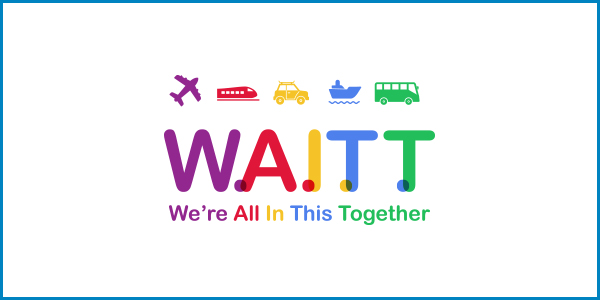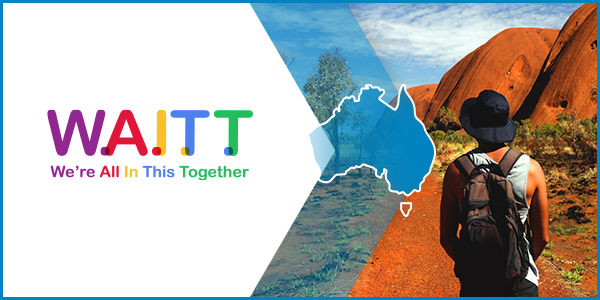Updated Domestic Travel Advice

Updated Domestic Travel Advice
We wanted to get this newsletter out as a matter of urgency to update everyone in relation to today’s developments regarding domestic travel.
All details relating to all states and territories can be found at www.healthdirect.gov.au/covid19-restriction-checker.
Before we get to the individual states, it should be noted that, if you are departing from Sydney airport and travelling through any of the 32 local government areas – “hotspots” – in order to get to the airport, YOU MUST NOT STOP in any of those 32 LGA’s – not even for food, or for a toilet break, or to re-fuel. You must proceed directly to the airport, otherwise you will be deemed to have been in a hotspot.
Queensland
From 1:00am on Tuesday 3 November 2020, visitors coming from NSW can enter Queensland for any reason with a valid border pass without completing mandatory quarantine — except those who’ve been in a COVID-19 hotspot in the 14 days before travelling. The 32 local government areas of Greater Sydney are still considered to be COVID-19 hotspots.
Go to qld.gov.au for more information.
(Current as of 3pm, 30 October, 2020)
South Australia
Travellers from NSW, the ACT, the Northern Territory, Queensland, Tasmania and Western Australia can enter South Australia without restriction. All travellers to SA still need to complete a Cross Border Travel Registration form. You can travel by road from NSW to SA, via Mildura in Victoria — providing you travel on the Sturt Highway between Mildura and Yamba, SA, and don’t leave your car while in Victoria. Travellers can also go via the Calder Highway and Meridian Road between Abbotsford Bridge and the Sturt Highway and then via the Sturt Highway to Yamba.
(Current as of 24 October 2020)
Lord Howe Island
Re-opened on Friday, 2 October, 2020 – now with direct flights Newcastle/Lord Howe every Saturday!
Norfolk Island
Persons travelling from any Australian state or territory other than Victoria will be free to enter Norfolk Island without quarantine as long as they have not come from any Commonwealth declared COVID Hotspots. Norfolk Island has adopted the Commonwealth hot-spot definition to assist in managing travel restrictions. Visitors will be required to pay a $25 fee for an entry pass, which will be processed via the existing entry pass software. The fee will be used by NIRC to pay for the continuation and maintenance of the Permit processing system.
(Current as of 30 October 2020)
The Australian Capital Territory
People in NSW hotspots are advised to reconsider travel to the ACT.
(Current as of 20 October 2020)
The Northern Territory
Must complete a Border Entry Form. You can do this online up to 72 hours before entering the Territory at coronavirus.nt.gov.au. If you arrive in the NT, having travelled from or through a declared hotspot in the past 14 days, you must do 14 days’ mandatory supervised quarantine at a designated facility until 14 days after you left the hotspot. You’ll need to pay a quarantine fee, which is $2,500 per person; or $5,000 for a family of 2 or more people sharing accommodation.
(Current as of 17 October 2020)
Tasmania
Entry to Tasmania and quarantine requirements depend on where you’ve been in the 14 days prior to travelling to Tasmania. Areas are determined as either low, medium or high-risk based on the number of COVID-19 cases or level of community transmission in those areas — subject to public health advice. Travellers arriving in Tasmania who have spent time in a medium or high-risk area in the 14 days prior to arrival need to quarantine on arrival. They also need to apply for an electronic G2G or ‘Good to go’ PASS from g2gpass.com.au. They need a QR code to enter the state. Travellers who’ve spent time in the last 14 days in a low-risk area don’t need to quarantine on arrival. They should register their travel and contact details via the Tas e-Travel system — visit coronavirus.tas.gov.au and click ‘Coming to Tasmania’. Travellers from low-risk areas can enter Tasmania without having to quarantine. They must have only spent time in a low-risk area in the 14 days prior to travel to Tasmania.
Low-risk areas are: Queensland, ACT, South Australia, Western Australia. NT, New Zealand.
From Friday 6 November 2020, NSW will be classified as a low-risk area — subject to public health advice. Travellers will be required to register their travel with the Tas E-Travel online system at least 3 days before arriving.
(Current as of 27 October 2020)
Victoria
Was declared a state of disaster from 6pm, Sunday 2 August. Melbourne is under Second Step restrictions. Regional Victoria is under Third Step restrictions. Wearing a face covering in public is mandatory in Victoria, with a few exceptions.
For more information, go to the Victorian Government’s restrictions page at dhhs.vic.gov.au/coronavirus or call the Victorian Coronavirus Hotline on 1800 675 398.
(Current as of 28 October 2020)
Western Australia
No one can enter Western Australia — including WA residents — unless they’ve been granted an exemption. If you’re permitted to enter WA and you’ve been in NSW in the past 14 days, you’ll need to take 2 mandatory COVID-19 tests — one when you arrive and one on day 11 of your quarantine. You will only be granted an exemption if you’re a specific essential worker; a transport or freight worker; or approved to enter by the state emergency coordinator on the advice of the chief medical officer. Transiting through an airport in either Victoria or NSW counts as being in Victoria or NSW during the past 14 days. From Monday 5 October, NSW will have the same entry conditions as other states and territories, other than Victoria. Arrivals from NSW will also need to have a COVID-19 test on day 11 of their quarantine.
(Current as of 5 October 2020)
However, the Western Australian Government issued the following statement today – (12.50pm, 30 October): “From Saturday, 14 November, WA will transition to a safe and sensible controlled border arrangement based on the latest public health advice. Every state and territory in Australia will need to record a 14-day rolling average of less than 5 community cases per day of COVID-19 for Western Australia’s new controlled interstate border arrangement to be introduced. Find out more about WA’s Controlled Interstate Border.”
If you’re like us, we can’t W.A.I.T.T. until this list of restrictions gets shorter, or is removed altogether because We’re All In This Together!

Where will I travel when the W.A.I.T.T. is over?
‘There’s a destination somewhere for me’
We’ll always hold fast to our mission statement that …
“Our clients work hard for their holidays, so we work hard to ensure that their holiday meets and exceeds their expectations.”
